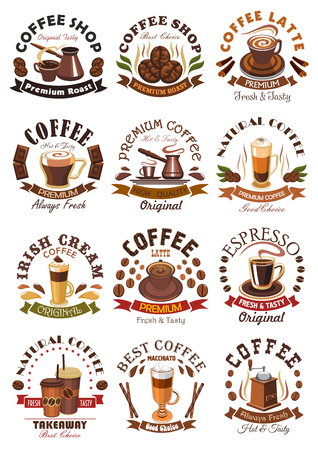1. Origins of Espresso in Italy
Espresso has deep roots in Italian culture and history. It all started in the early 20th century when Italians were looking for a quicker way to brew coffee. Traditional brewing methods took too long, and people wanted something fast but still strong and flavorful. In 1901, an inventor named Luigi Bezzera came up with a machine that used steam pressure to push hot water through finely-ground coffee beans. This method not only made coffee faster but also created a bold, concentrated shot—what we now know as espresso.
Over time, espresso became more than just a quick cup of coffee—it turned into a beloved daily ritual. From busy workers grabbing a quick shot before heading to the office, to friends chatting at the neighborhood café, espresso is deeply woven into everyday Italian life. Its not just about caffeine; its about connection, tradition, and community.
The Cultural Significance of Espresso
In Italy, drinking espresso is more than just a habit—its a social experience. People dont usually take their coffee to-go like many Americans do. Instead, they stand at the bar, sip their espresso quickly, and exchange a few words with the barista or fellow customers. This moment of connection happens several times a day for many Italians.
Espresso in Daily Italian Life
| Time of Day | Typical Espresso Habit |
|---|---|
| Morning | A quick espresso at the local bar before work |
| Midday | A short break with colleagues over a shot of espresso |
| Afternoon | A pick-me-up to recharge energy levels |
| After Dinner | An espresso to aid digestion and extend conversation |
How Espresso Became a Worldwide Icon
The popularity of espresso didn’t stay within Italy’s borders for long. By the mid-20th century, its rich flavor and quick preparation caught the attention of coffee lovers around the world. Today, espresso serves as the base for many popular drinks like cappuccinos, lattes, and Americanos—all inspired by Italian coffee culture.
Whether youre sipping it straight or using it as the heart of your favorite drink, every shot of espresso carries with it a little piece of Italy’s tradition and passion for great coffee.
2. What Makes an Espresso: The Basics
Espresso may be a small cup of coffee, but there’s a lot going on behind that rich, bold flavor. To truly understand espresso—the heart of Italian coffee tradition—you need to get familiar with the key elements that go into making it just right. Let’s break it down step by step.
Coffee Bean Selection
The journey to a perfect espresso starts with the beans. Traditional Italian espressos often use a blend of Arabica and Robusta beans. Arabica offers sweetness and acidity, while Robusta brings body and crema (that golden layer on top). In the U.S., many specialty shops lean toward 100% Arabica for a smoother taste, but true Italian-style espresso usually includes some Robusta for that extra kick.
Bean Comparison Table
| Bean Type | Flavor Profile | Common Use in Espresso |
|---|---|---|
| Arabica | Smooth, fruity, slightly acidic | Main component in specialty blends |
| Robusta | Bold, earthy, more bitter | Adds crema and strength in traditional Italian blends |
Grind Size Matters
A good espresso grind is fine—almost like powdered sugar—but not too fine that it clogs the machine. If the grind is too coarse, the water will pass through too quickly and make a weak shot. Too fine, and youll over-extract the coffee, leading to bitterness. A consistent grind ensures that the pressure can build up properly during brewing.
Pressure: The Heartbeat of Espresso
Espresso machines work under high pressure—specifically around 9 bars (that’s nine times the pressure at sea level). This intense force pushes hot water through the compacted coffee grounds quickly, extracting flavors fast. It’s this pressure that creates espressos signature crema and concentrated taste.
Extraction Time
An ideal espresso shot takes about 25 to 30 seconds to pull. This short window is crucial: too fast means under-extraction (sour and weak), too slow means over-extraction (bitter and harsh). Timing works hand-in-hand with grind size and pressure—getting all three right is key to nailing that authentic Italian experience.
Espresso Brewing Quick Guide
| Element | Ideal Range | Effect if Incorrect |
|---|---|---|
| Grind Size | Fine (like table salt) | Too coarse = weak; Too fine = bitter or clogged machine |
| Pressure | Around 9 bars | Poor extraction if too low or inconsistent |
| Extraction Time | 25–30 seconds | Sour if too fast; Bitter if too slow |
Mastering these four basics—bean selection, grind size, pressure, and time—is the foundation of crafting a real-deal espresso worthy of Italy’s finest cafés. Whether youre pulling shots at home or ordering from your favorite local spot, understanding these factors helps you appreciate every sip a little more.
![]()
3. Espresso Culture in Italian Daily Life
In Italy, espresso is more than just a drink—its a daily ritual deeply woven into the fabric of everyday life. From early morning routines to afternoon pick-me-ups, Italians enjoy their espresso with a sense of tradition and community that sets it apart from coffee culture in other countries.
The Art of Standing at the Bar
One of the most iconic parts of Italian espresso culture is standing at the bar to drink your coffee. Unlike in the U.S., where people often take their coffee to go, Italians typically consume their espresso quickly, right at the counter. This practice isnt just about convenience; its a social moment, a quick pause in the day to connect with others or simply enjoy a brief break.
Why Italians Prefer the Bar
| Reason | Description |
|---|---|
| Speed | Espresso is made and consumed quickly—perfect for busy schedules. |
| Social Interaction | People chat with baristas or other customers while sipping their coffee. |
| Tradition | Its how Italians have enjoyed espresso for generations. |
| Cost | Sitting at a table often costs more than standing at the bar. |
Coffee Breaks, Italian Style
In Italy, coffee breaks are small but meaningful moments throughout the day. Morning usually starts with an espresso paired with a pastry like a cornetto. Around mid-morning and mid-afternoon, many Italians stop by their local bar for another shot of espresso—often referred to as “un caffè.” These breaks arent long; they’re quick rituals that bring rhythm to daily life.
When Do Italians Drink Espresso?
| Time of Day | Coffee Habit |
|---|---|
| Morning (7–9 AM) | Espresso with breakfast, often at home or on the way to work. |
| Mid-Morning (10–11 AM) | A quick stop at the bar for a second espresso. |
| After Lunch (1–2 PM) | An essential digestive “caffè” after meals. |
| Afternoon (4–5 PM) | A small pick-me-up during work or before heading home. |
| Evening (Rarely after 6 PM) | Less common due to caffeine sensitivity, unless decaf is chosen. |
A Shared Ritual Across Generations
No matter the age, Italians take part in this coffee culture from young adulthood onward. It’s common to see people from all walks of life gathered around a bar counter—students, professionals, retirees—all united by their love for espresso. It’s not just about caffeine; it’s about tradition, connection, and enjoying the moment.
4. Espresso Comes to America
Espresso may have its roots deep in Italian culture, but it didnt stay there for long. The story of how espresso made its way across the Atlantic and found a new home in the United States is one filled with innovation, cultural blending, and a growing love for bold coffee experiences.
Early Beginnings: Italian Immigrants Bring the Taste
Espresso first arrived in the U.S. during the early 20th century, brought by Italian immigrants who settled in cities like New York, Boston, and San Francisco. These communities opened small cafes that served espresso just like back home—strong, concentrated, and full of flavor. However, at that time, espresso remained mostly within Italian-American neighborhoods and was not yet part of mainstream American coffee culture.
The Rise of Coffeehouse Culture
In the 1950s and 60s, the Beat Generation helped spark a new interest in espresso-style drinks. Bohemian cafes became gathering spots for poets, writers, and artists who sipped on cappuccinos and espressos while discussing art and politics. This era marked the beginning of espresso’s influence on American café culture.
Starbucks and the Mainstream Espresso Boom
The real turning point came in the 1980s when Starbucks began expanding nationwide. Inspired by Italian espresso bars, Starbucks introduced Americans to lattes, mochas, and other espresso-based drinks—but with a twist. Unlike traditional Italian servings which are small and strong, American versions often came in larger sizes with added flavors and milk.
Italian Espresso vs. American Espresso Culture
| Aspect | Italian Tradition | American Adaptation |
|---|---|---|
| Serving Size | 1 oz (single shot) | Tall to Venti (multiple shots) |
| Drinking Style | Quick sip at the bar | Sip over time or take-out |
| Flavor Additions | Rarely flavored | Syrups, whipped cream, milk options |
| Café Atmosphere | Fast-paced and social | Lounge-style with Wi-Fi & workspaces |
The Role of Espresso Today in America
Today, espresso is at the heart of nearly every specialty coffee drink served across the U.S., from neighborhood cafes to major chains. It has not only shaped how Americans drink coffee but also how they socialize around it. Whether it’s a morning latte run or an afternoon pick-me-up espresso shot, this tiny cup of bold flavor continues to fuel American life—one sip at a time.
5. Modern Espresso: From Tradition to Innovation
While espresso remains deeply rooted in Italian culture, todays baristas and specialty coffee shops across the United States are reimagining this classic drink with creativity and innovation—without losing sight of its origins.
Honoring the Italian Roots
Traditional Italian espresso is known for its strong flavor, rich crema, and small serving size. American baristas respect these foundations by using high-quality beans, precise dosing, and proper extraction times. Many still follow the classic espresso recipe: 7-9 grams of finely ground coffee brewed in about 25 seconds to produce a 1-ounce shot.
Innovations in Espresso Preparation
At the same time, modern cafés experiment with methods that push boundaries while respecting tradition. These include:
| Innovation | Description | How It Honors Tradition |
|---|---|---|
| Single-Origin Espresso | Using beans from one specific region or farm to highlight unique flavors. | Focuses on bean quality, similar to Italian emphasis on sourcing good coffee. |
| Espresso Tasting Flights | Offering multiple espresso shots made from different beans for comparison. | Encourages appreciation of espresso’s complexity, much like wine tasting in Italy. |
| Modern Equipment | Using machines with pressure profiling and temperature control features. | Keeps brewing consistent and precise, key values in traditional Italian methods. |
| Dairy-Free Milk Alternatives | Serving espresso-based drinks with oat, almond, or soy milk. | Adapts to modern dietary needs while keeping focus on espresso as the base. |
| Signature Espresso Drinks | Cafés creating unique beverages like honey lavender lattes or iced orange espressos. | Adds creativity but always starts with a well-pulled shot of espresso. |
The Role of the Barista Today
A modern barista is both an artisan and a historian. They study Italian techniques while staying open to new trends. Many undergo training that includes learning about espresso’s heritage and mastering new tools like refractometers and mobile apps that track brew consistency. This blend of old and new keeps the espresso experience fresh yet familiar.
A Community-Centered Experience
Much like the traditional Italian café, where espresso is enjoyed standing at the bar among friends, American specialty shops aim to create welcoming spaces. Customers are invited to learn more about what’s in their cup, building a sense of connection—both to the drink and its cultural roots.
In essence, today’s espresso scene reflects a beautiful balance: honoring Italys iconic coffee tradition while embracing innovation that makes each shot uniquely modern and distinctly American.


